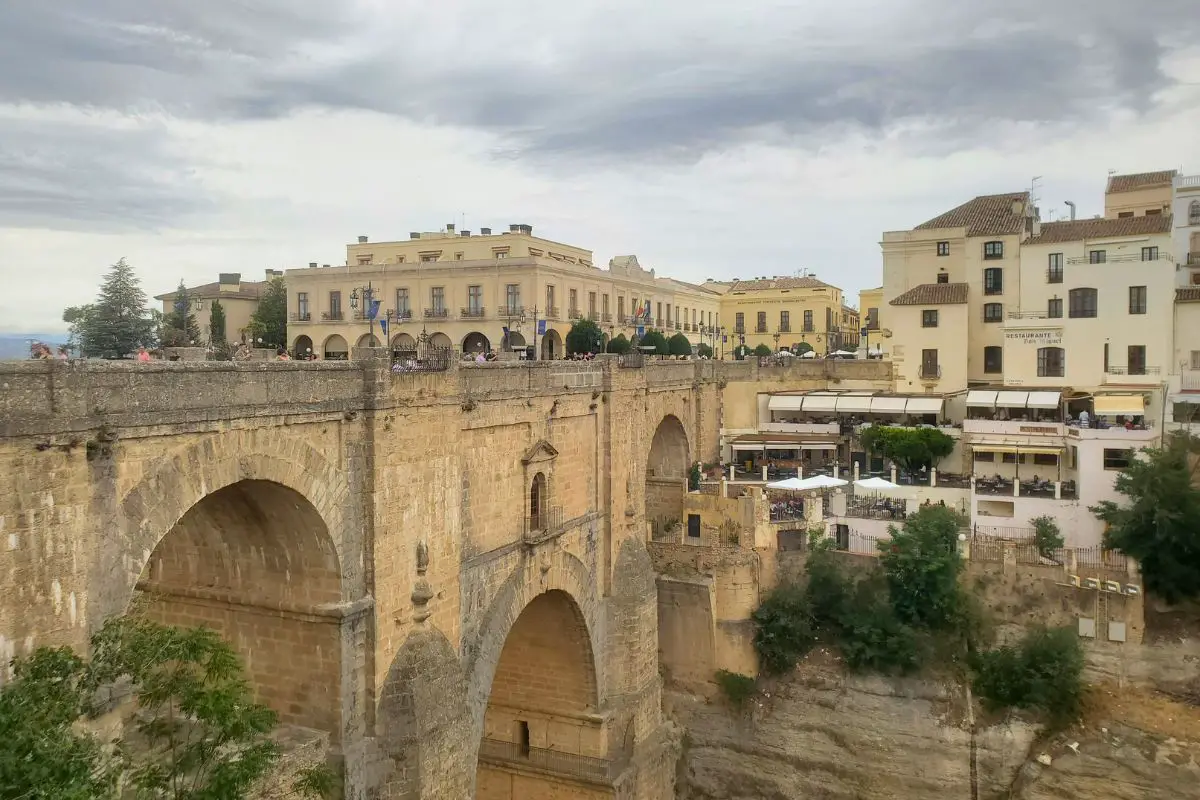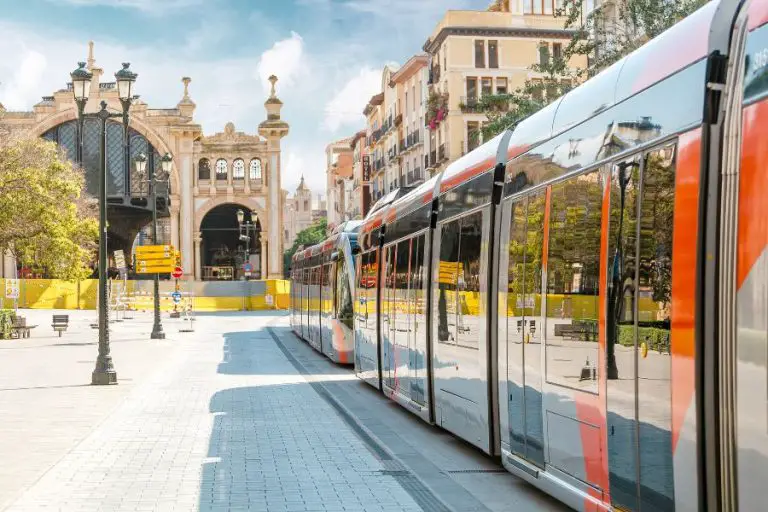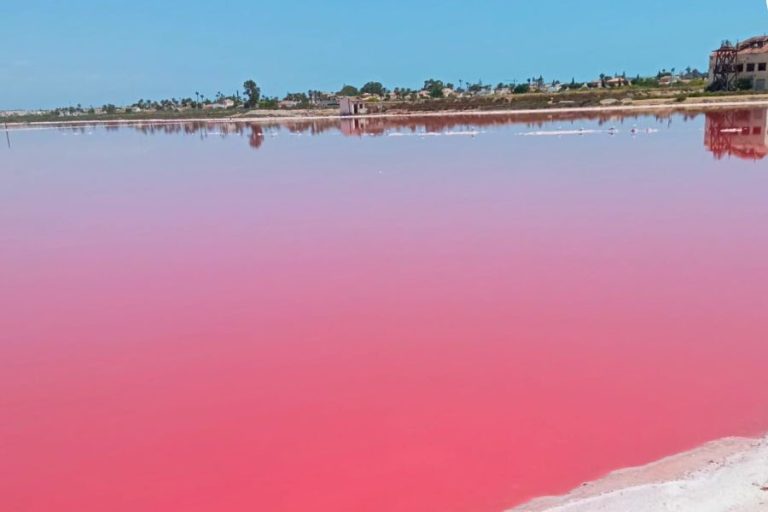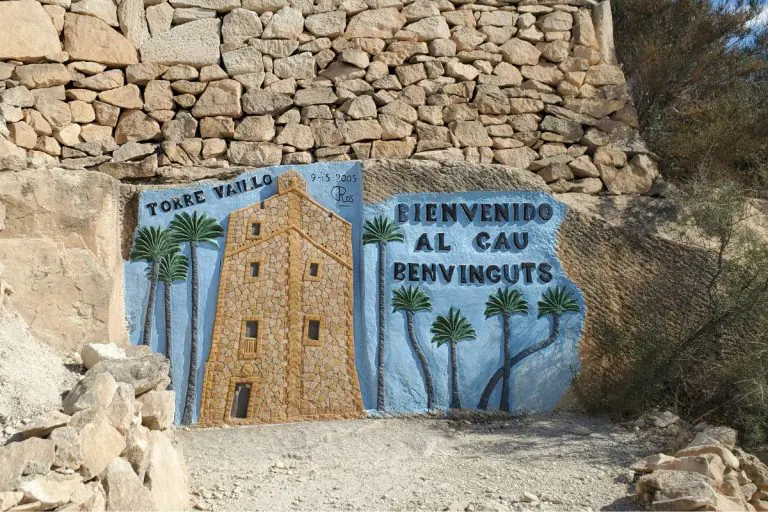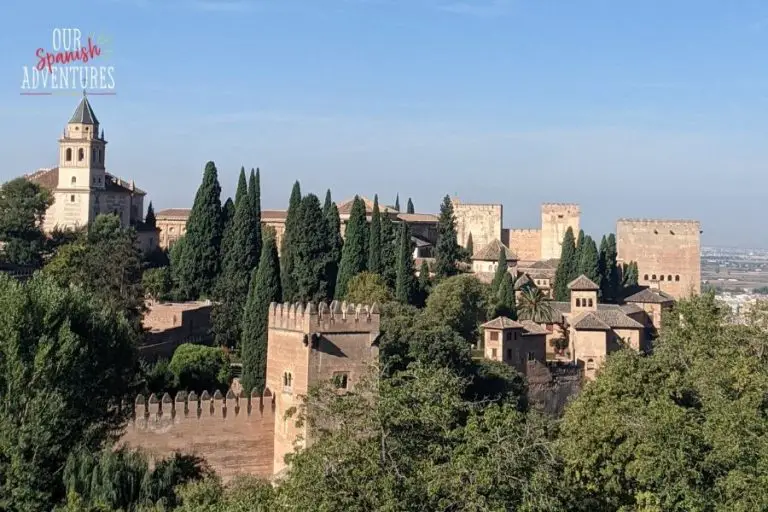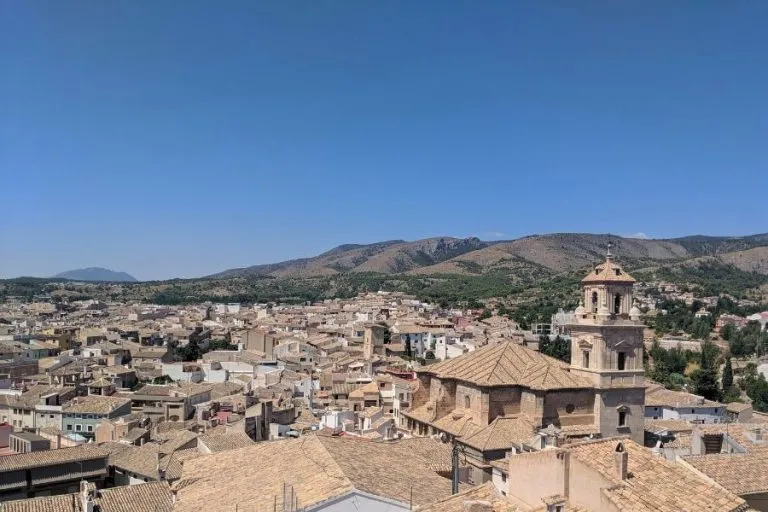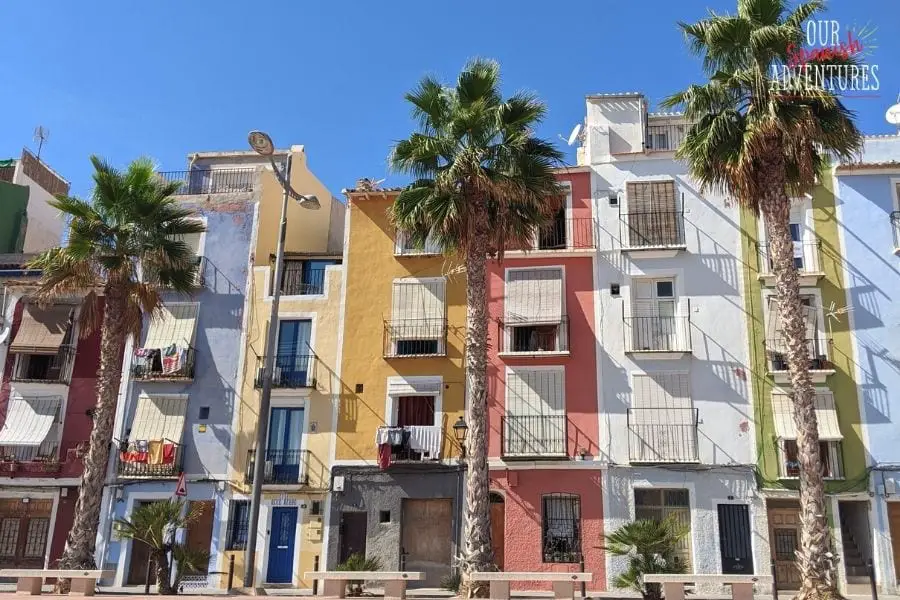Spending the day in Ronda – what to see and do
We’re gradually getting round to visiting some of the places that have been on our Spanish bucket list for a while, and this summer we finally got to cross Ronda off our list!
So far we’ve mainly travelled around the Costa Blanca region where we live, as with work and school commitments it can often be hard to find the time to go on road trips to explore further afield.
Back in June we spent a week in Nerja, and used this as an opportunity to visit some other amazing places in the Andalucia region. The only problem is, we want to go back and explore more of this area now!
If you’re wondering if Ronda is worth visiting, the answer is a big yes from us! So if you’re ready to plan a trip to the beautiful city of Ronda, read on for more information about our visit, what to see in Ronda in one day, things to do, and where to stay.
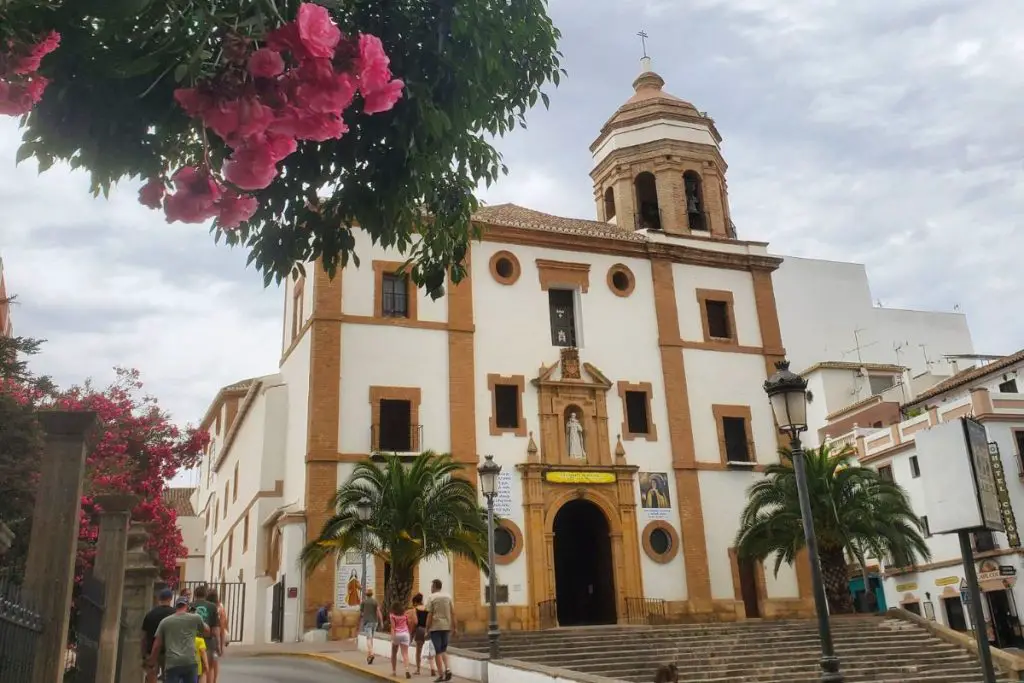
Some of the links below are affiliate links which means we may make a small commission at no cost to you on any purchases made through these links.
About Ronda
Ronda is a historic city located in the province of Málaga, in the autonomous community of Andalucia, Spain. The city is perched on a deep gorge, known as El Tajo, which divides the city and offers stunning views of the surrounding countryside.
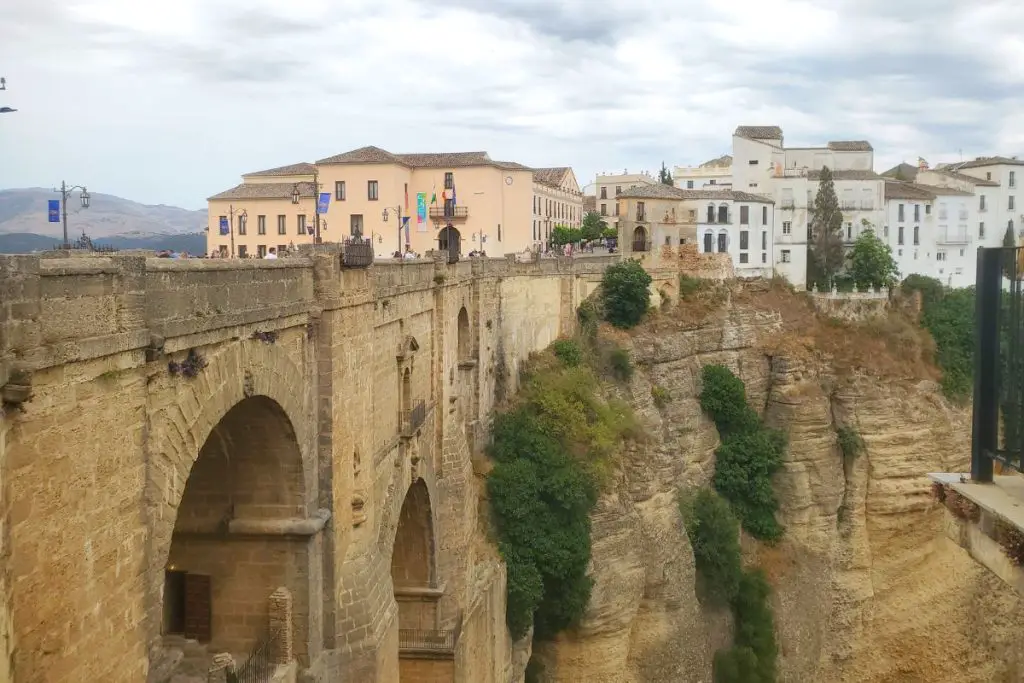
What is Ronda famous for?
Ronda is famous for its dramatic cliffside setting, the Puente Nuevo bridge spanning the El Tajo gorge, its rich history dating back to Roman times, and its bullfighting tradition.
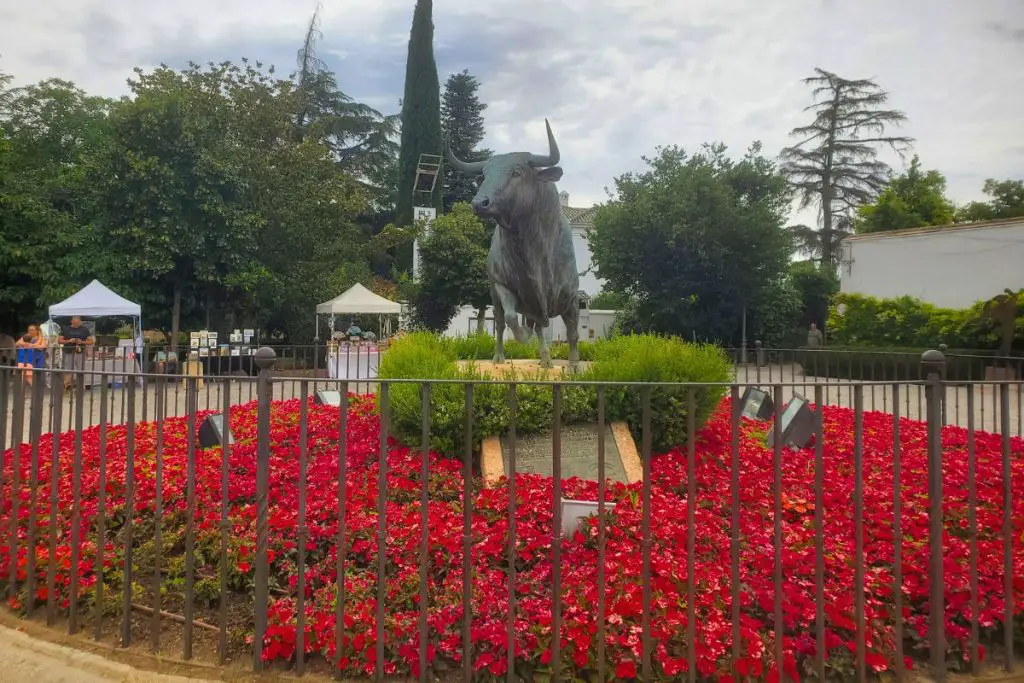
5 facts about Ronda
1. Ronda is one of the oldest towns in Spain, with its origins dating back to the Neolithic Age.
2. It is home to one of the oldest bullrings in Spain, the Plaza de Toros de Ronda, known for its historic significance in bullfighting.
3. Ronda has inspired many artists and writers, including Ernest Hemingway and Orson Welles, who both spent time in the city.
4. The Puente Nuevo bridge, built in the 18th century, is one of Ronda’s most iconic landmarks and offers stunning views of the surrounding landscapes.
5. Ronda is known for its traditional Andalusian cuisine, including dishes like rabo de toro (bull’s tail stew) and local wines.
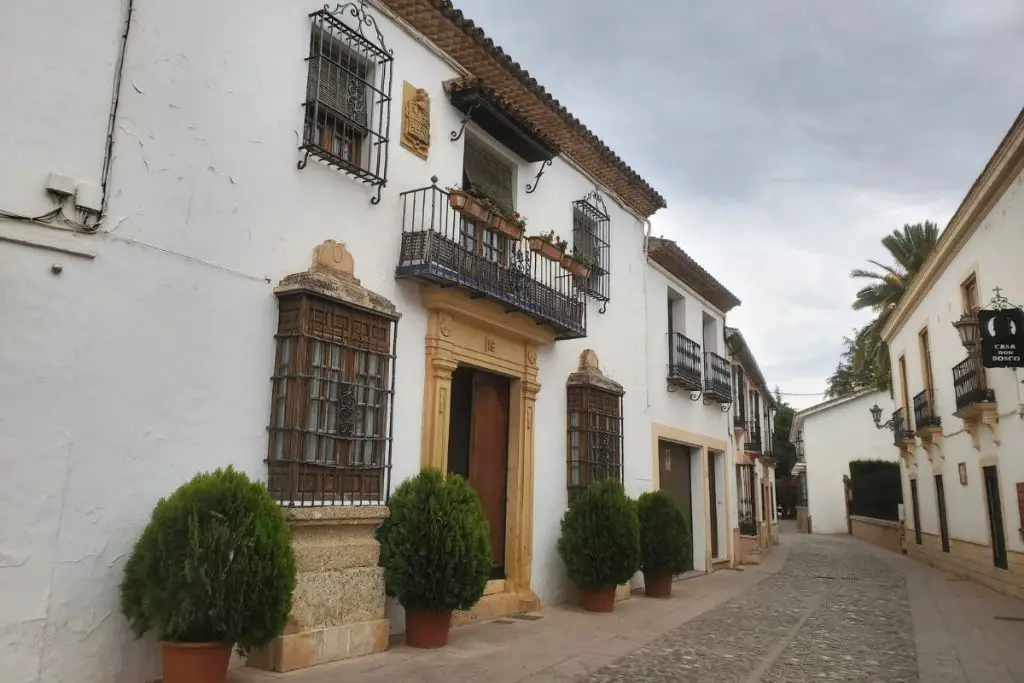
Grab your Ronda Tourist Pass!
Before your trip to Ronda, make sure you grab your Ronda Tourist pass which will save you both time and money on your visit. The pass allows you to skip the queues at the top tourist attractions in Ronda and visit the town’s main monuments.
Spending the day in Ronda
We drove from Nerja to Ronda, which took around 2 hours. After a quick stop in Sentenil de las Bodegas on the way we arrived in Ronda at around 12pm.
Never having visited the city before we just parked in the first available carpark we saw which was luckily only a short walk from the city centre. First of all we came across a beautiful park, Alameda del Tajo, and spent some time walking through here and admiring the amazing views across the surrounding mountains and countryside.
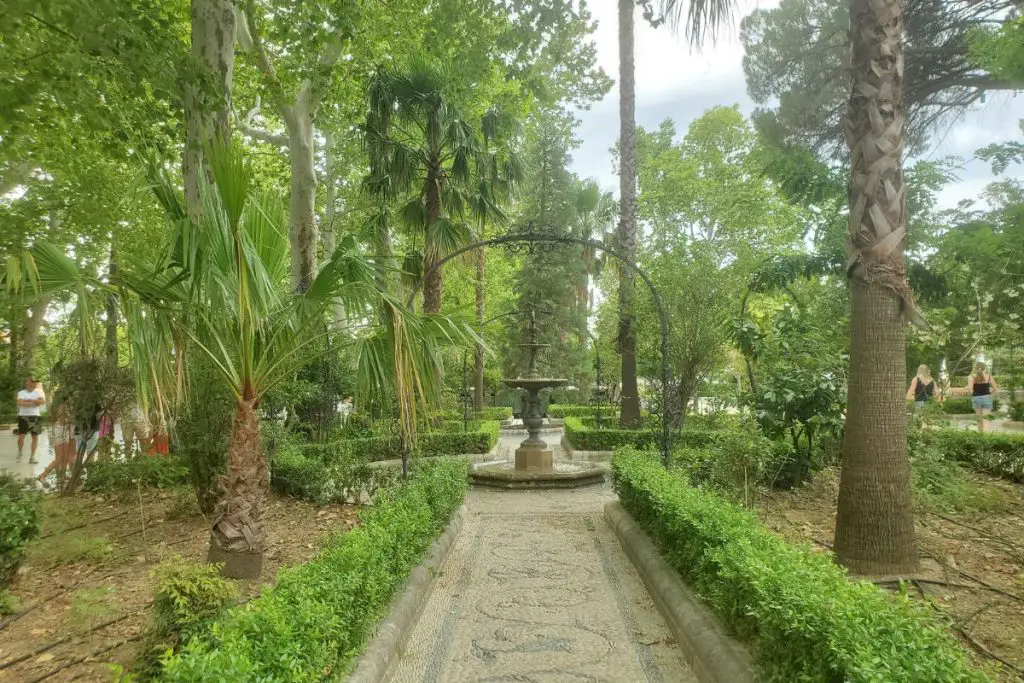
The park is located next to the Plaza de Toros de Ronda (the bullring) so we decided to head in here first. Even if you don’t agree with bullfighting (which we don’t), it’s such a huge part of Spanish culture and history that it’s important to learn about it so you can better understand why and how it started.
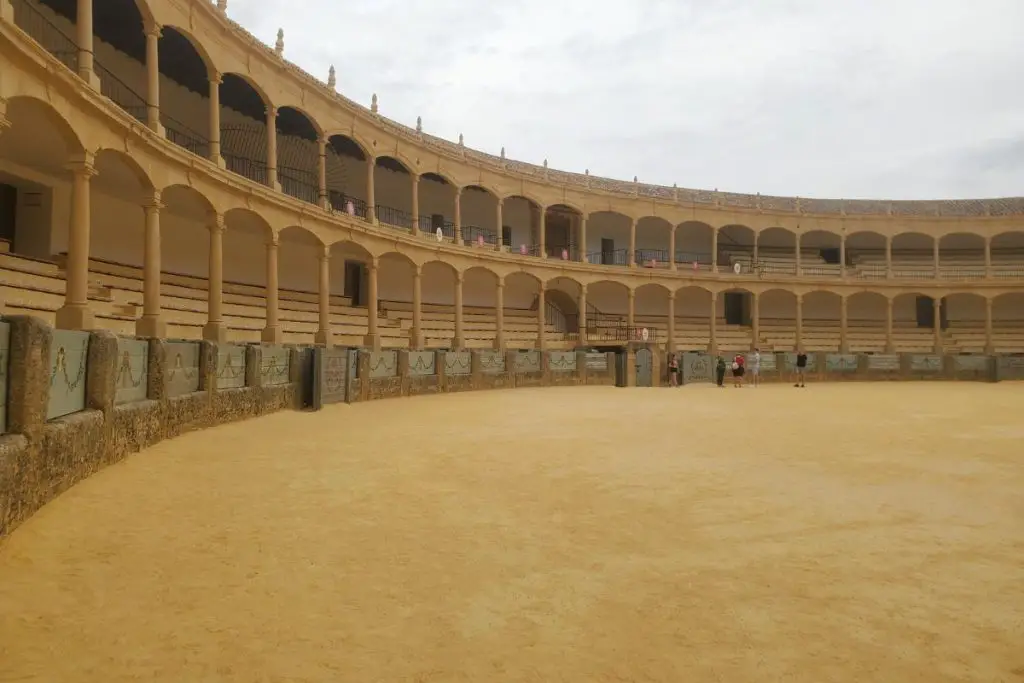
The bullring is a fascinating building to explore, and sitting on the benches looking out onto the arena you can imagine what the atmosphere must be like during a bullfight.
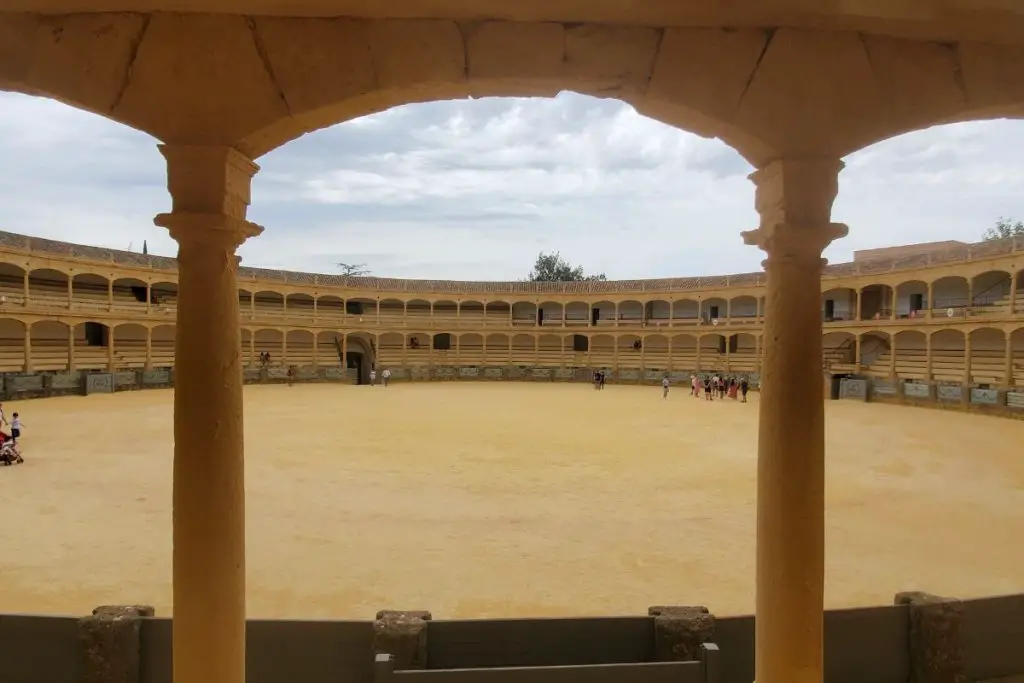
You can wander around the whole arena to see the view from various points, before heading down to the ground floor to look around the museum. As well as lots of interesting facts about the history of bullfighting, there are some beautiful costumes, saddles, art, and more on display.

We really enjoyed our visit to the Plaza del toros and would highly recommend it if you’re looking for things to do in Ronda.
After the bullring we walked through the streets towards the old town and stopped for a drink. Here you’ll find lots of shops, restaurants and cafes, as well as some beautiful old buildings and pretty plazas, and will be heading towards the centre of the city and the bridge.
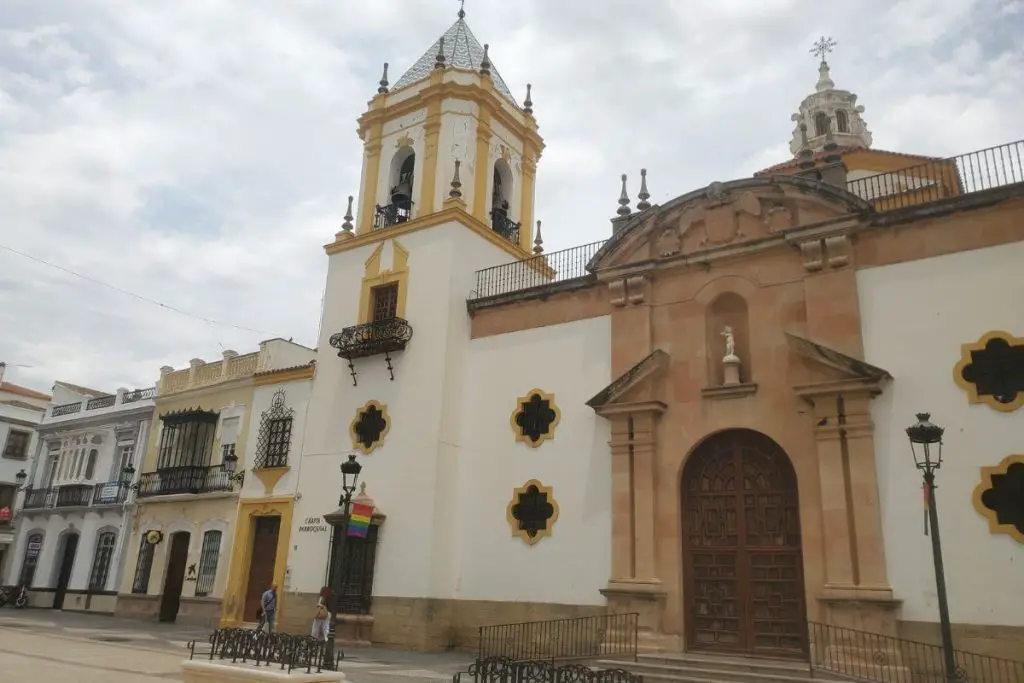
The famous bridge in the middle of Ronda is called the Puente Nuevo (new bridge) and connects the two sides of Ronda that are separated by the El Tajo Gorge. The views from the bridge are spectacular and you’ll want to spend some time taking them in. You can walk to both sides of the bridge, head down the steps next to the Parador Hotel (for a charge of 2.50€ per person) to see the view of the gorge below. It was a cloudy and overcast day when we visited, but the views were still pretty amazing so if you visit on a bright. sunny day you’ll be amazed by how far you can see.
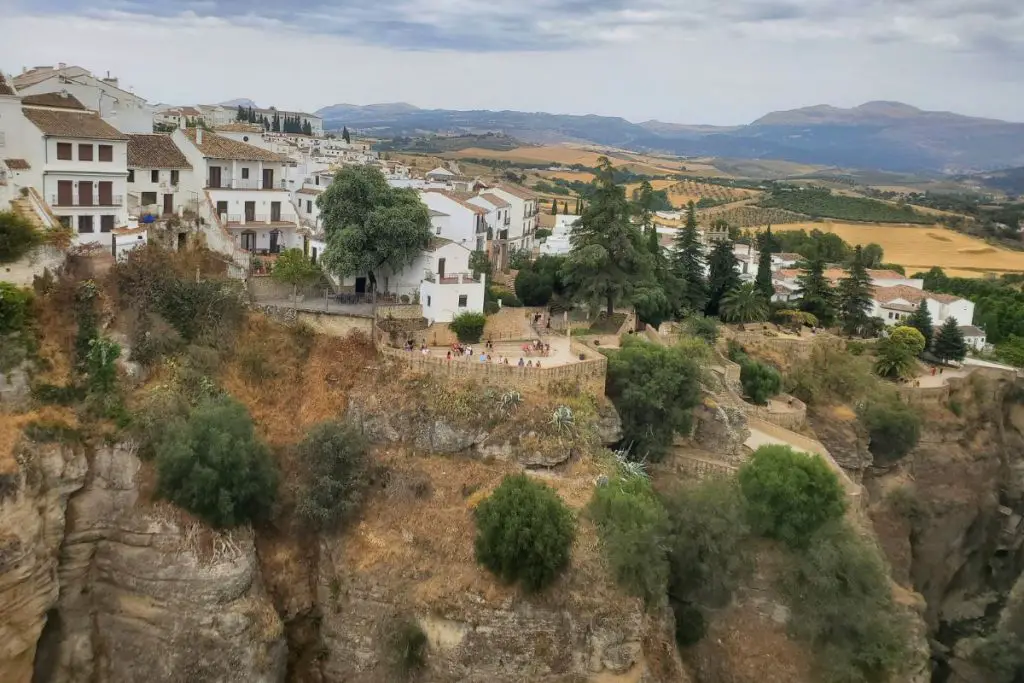
You can also walk down the El Tajo gorge trail which starts on the Old Town side of the bridge. Follow the path to the bottom of the gorge and then the steps down to the bottom of the bridge. It’s quite a steep walk with some loose stones underfoot but you’ll be rewarded with the best views in the city! Unfortunately with a husband with a knee injury and a lazy teenager we didn’t do the walk on our visit, but hopefully we will next time!
Directly on the other side of the bridge is the 16th Century convent building which you can enter for €1. It was closed when we went to have a look but if you go just inside the entrance you can still see the pretty courtyard.
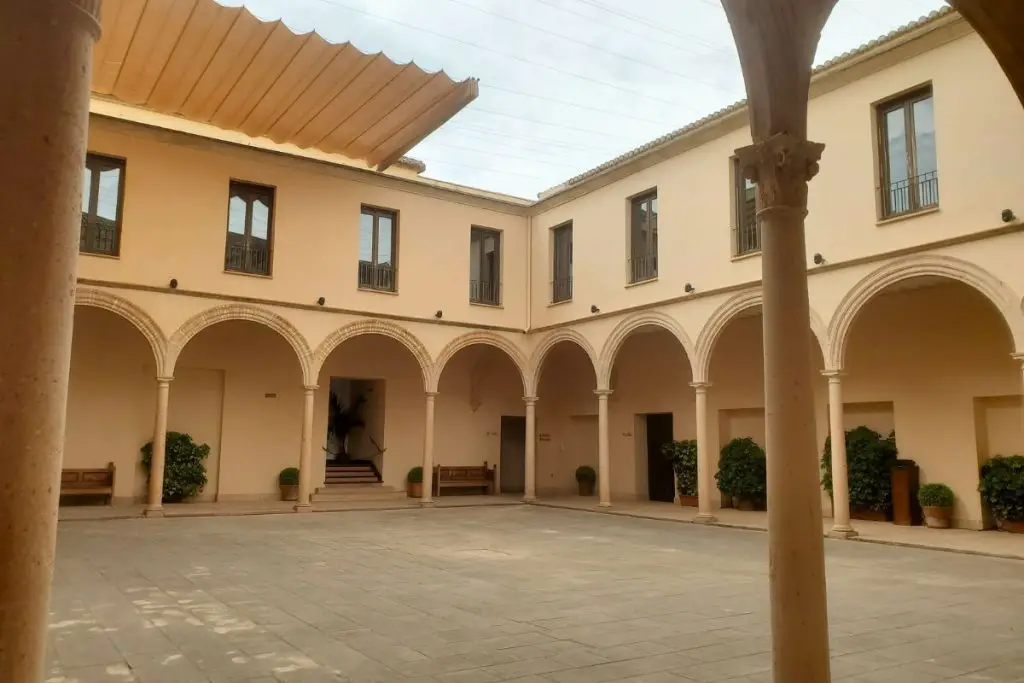
As you walk over the bridge you’ll find yourself in the old town of Ronda which is a maze of narrow cobbled streets with plenty of beautiful buildings and hidden plazas.
In the old town we found a small museum that promised great views of the bridge from it’s garden, so in we went. Casa Museo Don Bosco is a stately home built in 1850 that is still decorated with furniture, paintings and tapestries from the modernist era.

There is a beautiful garden where you can sit with a drink on the terrace and take in the views of El Tajo gorge and the bridge. The cost to enter the museum is €2.50 per person and well worth it for the views.
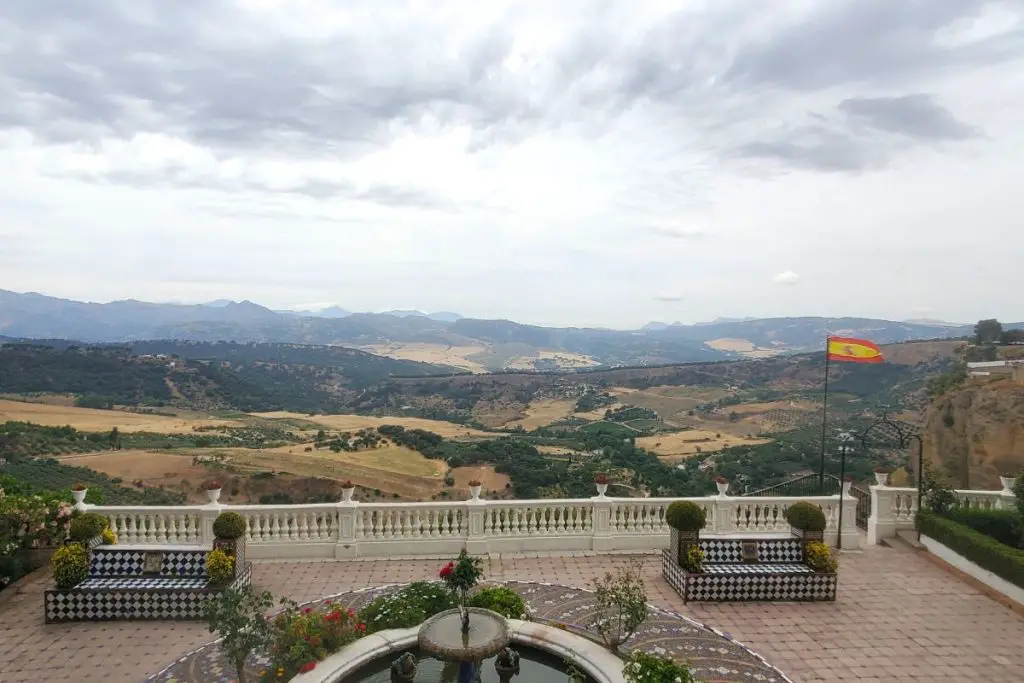
You could spend all day walking through the old town, there are so many streets, cafes and museums to find, as well as the remains of the medieval fortress. Plus round every corner you’ll come across more stunning views across the gorge and surrounding hillside.
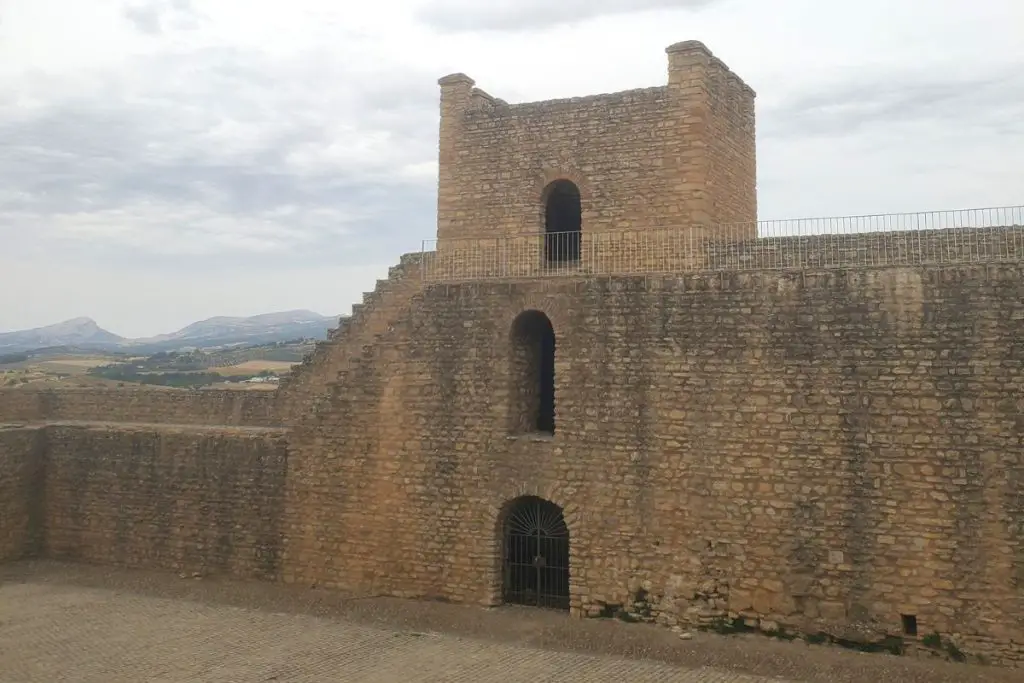
Take your time to wander around, stopping for tapas and drinks with views over the bridge and gorge because you won’t see views like this anywhere else in Spain!
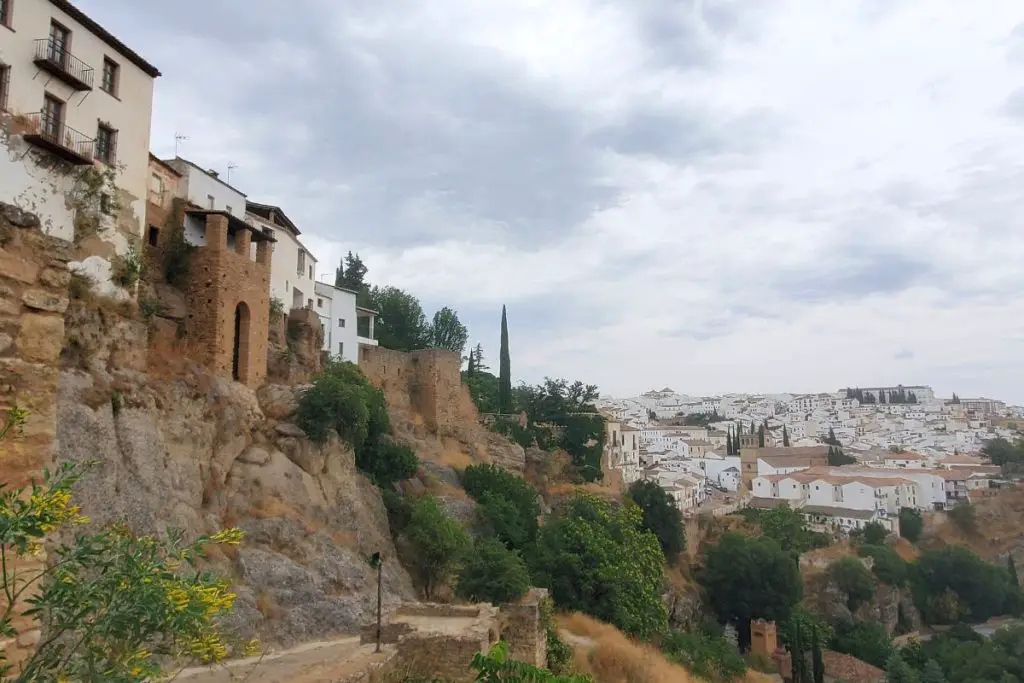
We left before it got dark to drive back to Nerja, but if you’re staying into the evening you won’t be short of restaurants to dine in and admire the night time views of Ronda.
Things to do in Ronda
There’s lots to do and see in Ronda, whether you’re just there for the day or are spending a couple of days in the city.
Some of the top things to do in Ronda that you should add to your list are:
- Visit the Plaza de Toros de Ronda, one of the oldest bullrings in Spain.
- Walk across the Puente Nuevo bridge for panoramic views of the gorge.
- Explore the historic old town with its Moorish architecture and charming streets.
- Visit the Arab Baths and the Mondragon Palace to learn about Ronda’s history.
- Hike in the surrounding countryside to appreciate the natural beauty of the area.
- Join a free tour of Ronda to find out more about the city from an expert local guide.
Where is Ronda?
Ronda is located in the province of Málaga, in the region of Andalusia, southern Spain. Ronda is approximately 100km from Málaga city and 128km from Seville.
How to get to Ronda
By Car: Ronda is accessible by car via the A-374 road from the Costa del Sol or the A-397 road from the interior of Andalucia. If you need to hire a car, visit Rentalcars.com
By Train: Ronda is connected to major cities like Málaga and Seville by train, offering scenic views along the way. To find good deals on train fares, visit RailEurope.
By Bus: Regular bus services operate to and from Ronda, connecting it to nearby towns and cities. To find good deals on bus fares to Ronda, visit BusBud.
Tips for visiting Ronda
Ronda is very popular with tourists and you’ll find yourself doing a lot of walking, so take this into consideration when planning your visit. Some tips to bear in mind include:
- Wear comfortable shoes for exploring the hilly terrain and cobblestone streets.
- Start your day early to avoid crowds at popular attractions.
- Bring a camera to capture the stunning views of the gorge and surrounding landscapes.
- Try local delicacies like tapas and wines in traditional taverns.
- Respect the local customs and traditions, especially around bullfighting.
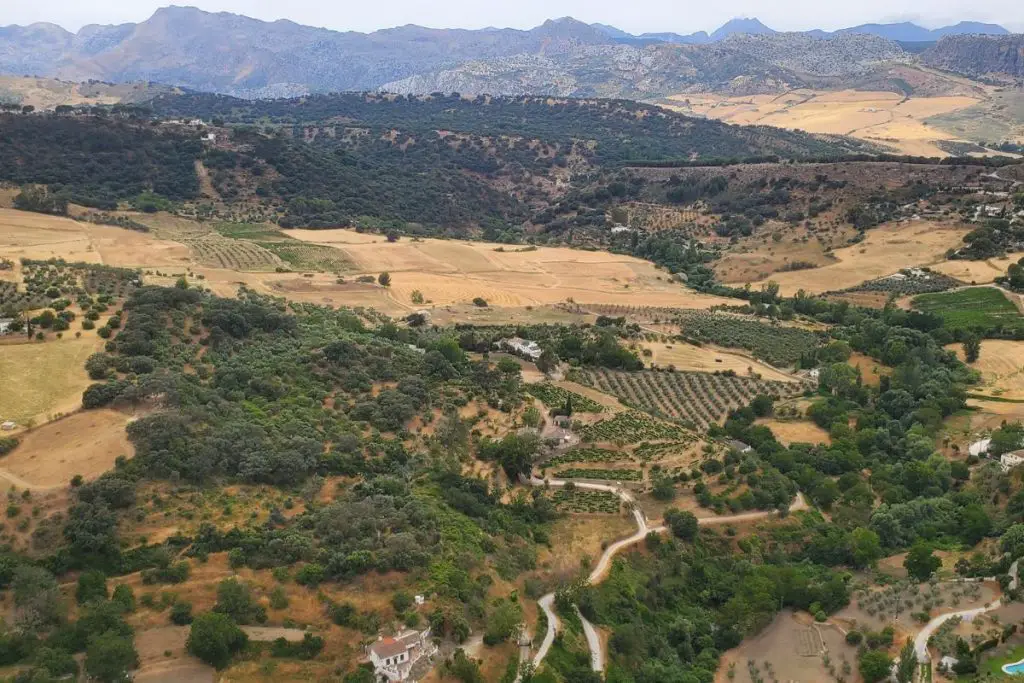
When is the best time to visit Ronda?
The best time to visit Ronda is during the spring (April to June) and autumn (September to November) when the weather is pleasant, and the city is less crowded with tourists.
We visited at the end of June when the weather was warm but cloudy and not too hot for wandering around. There were a lot of tourists around but it wasn’t too crowded to explore.
Bear in mind that winter months in Ronda can be quite cold due to it’s high up location inland – expect it to be at least 5 degrees cooler than on the coast.
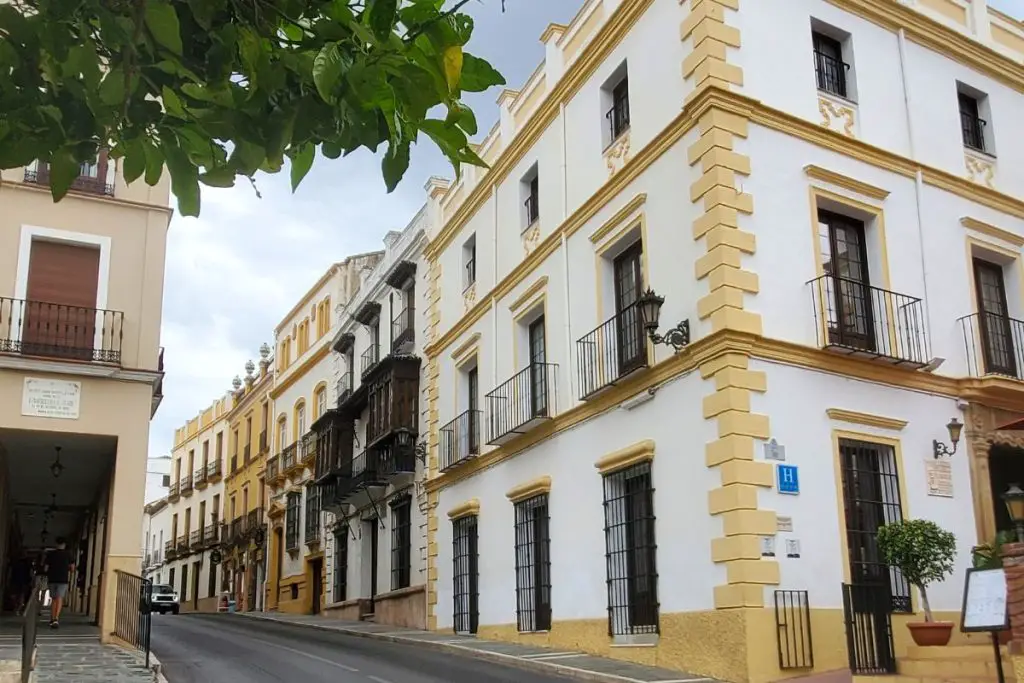
Where to stay in Ronda
If you have time in your trip, staying in Ronda at least overnight is a great idea so that you can spend time exploring and seeing all the city has to offer.
Ronda offers a wide variety of accommodation options, including boutique hotels, guesthouses, and traditional Spanish villas. Some recommended places to stay include Parador de Ronda, Hotel Montelirio, and Hotel Catalonia Reina Victoria.
Find the best hotels in Ronda with the below search tool.
If you’re visiting Ronda soon, we hope this Ronda travel guide has given you some suggestions of what to do on your day trip!
If you’ve already bee, what was your favourite part of Ronda?

